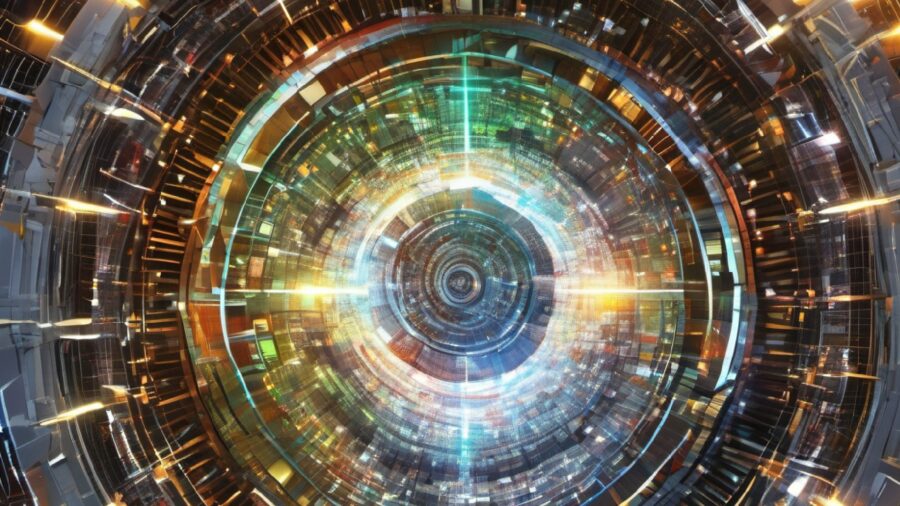Heaviest Antimatter In History Created

Antimatter is all around us but is still not as well understood as matter. The opposite of matter in some respects, antimatter has a negative charge, and scientists have recently discovered the heaviest antimatter nucleus ever detected. Antimatter has proven to be an elusive type of particle to study, as it is much rarer than matter, even though it likely came into being in equal parts to matter some 14 billion years ago.
As scientists are still in the dark about why antimatter is so much scarcer than matter in our universe, the hunt for its origins is a search for the beginning of existence as we understand it.
The heavy antimatter nucleus was discovered by researchers at the Relativistic Heavy Ion Collider in Upton New York through analyzing the tracks left by 6 billion atomic collisions. The STAR Collaboration team, operating a solenoidal tracker, found the brand-new particle and named it antihyperhydrogen-4. This weighty discovery edges out the previous heavy antimatter nucleus record-holder, antihelium-4.
While antimatter particles are created intentionally during “atom-smashing” experiments at the collider, the combination of the essential elements to create this newly discovered heavy antimatter nucleus is pure happenstance.
To discover the heaviest antimatter nucleus ever detected, STAR scientists traced the path of antihelium-4 and another particle called pion, recording their minuscule trajectories through the profusion of matter and antimatter particles created by the collider. The team was looking for the few instances out of billions in which the paths of pion and antihelium-4 particles crossed, suggesting that they could have originated from the same nucleus as it broke apart. Then, the team deduced that of these events, about 22 could have originated from the larger particle, anti-hyperhydrogen 4.
Of the 22 possible instances where the antihelium-4 and pion particles could have been the result of the breakup of a single nucleus, 16 were determined to have been verifiably connected to an anit-hyperhydrogen-4 nucleus deteriorating. The other six events were considered to be “noise” or not originating from a single antimatter nucleus. Researchers concluded that they had discovered a new antimatter particle, the heaviest yet, based on these calculations.
Scientists working on the STAR project are using the newly discovered heavy antimatter nucleus to investigate the interaction between matter and antimatter.

The study of matter-antimatter symmetry is only possible through first observing antimatter particles. As scientists are still in the dark about why antimatter is so much scarcer than matter in our universe, the hunt for its origins is a search for the beginning of existence as we understand it. Solving the mysteries of our universe is heavily related to solving the mysteries of heavy antimatter, and how it interacts with matter.
Matter and antimatter are similar in most ways that we can measure with our current understanding of physics. They have the same mass and the same lifetime before decaying, as well as the same interactions with charged particles, making them similar in all ways we can observe except that matter is positively charged and antimatter is negatively charged.
Scientists working on the STAR project are using the newly discovered heavy antimatter nucleus to investigate the interaction between matter and antimatter.
Because antimatter is unstable, it has been historically difficult to observe, especially since the particles are sub-microscopic. But the Relativistic Heavy Ion Collider is the perfect place to look for antimatter particles, as scientists are creating them there intentionally.
The STAR Collaboration team, operating a solenoidal tracker, found the brand-new particle and named it antihyperhydrogen-4.
Source: Brookhaven National Laboratory












